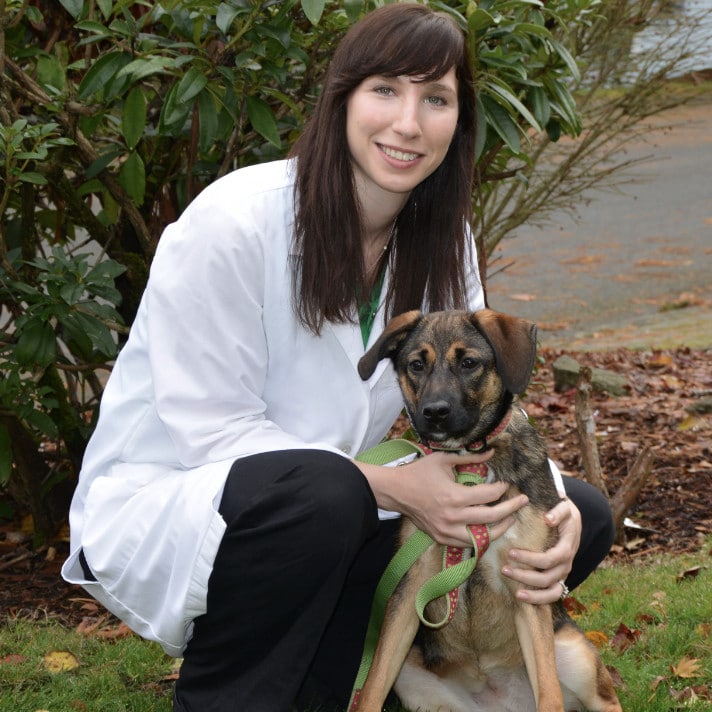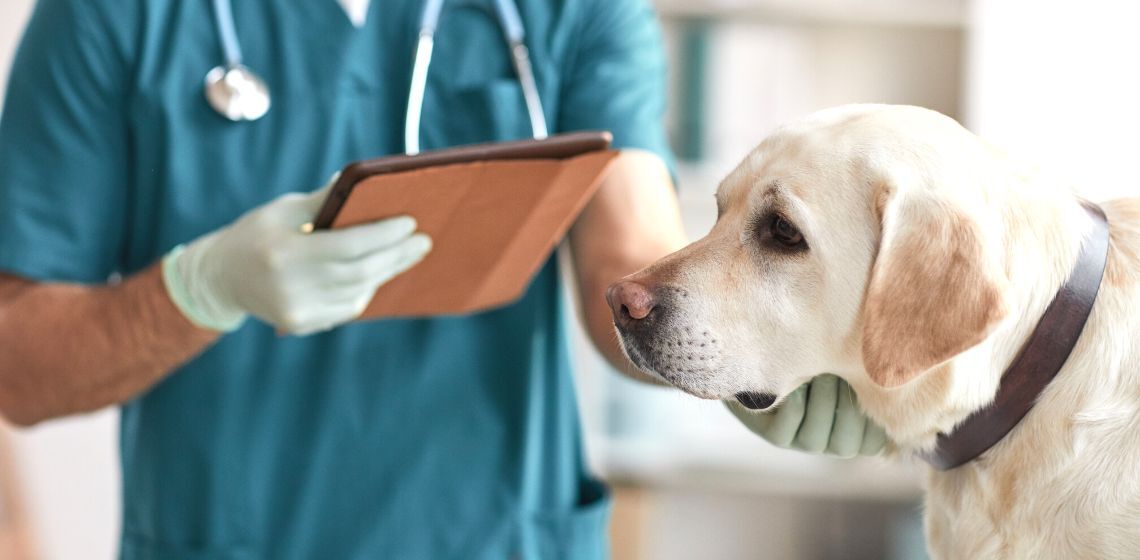Table of Contents
What is Mastitis in Dogs?
Mastitis is inflammation of the mammary glands (breast tissue). It is most commonly associated with a bacterial infection and occurs in the postpartum period after a female dog has given birth to puppies.
What are the Signs and Symptoms of Mastitis in Dogs?
Mastitis can affect just one mammary gland or multiple. The clinical signs of mastitis can also range from asymptomatic to severe and even life-threatening.
- Acute mastitis will cause hot, red, swollen, and painful mammary gland(s).
- As the disease progresses, the mammary glands may become purple or black, and the skin may ulcerate and scab.
- If the infection spreads and enters the bloodstream leading to septic mastitis, your dog will become obviously ill. Clinical signs include fever, depression, lethargy, loss of appetite, vomiting, and neglecting the puppies.
- Reluctance to nurse may lead to poor weight gain or failure to thrive in puppies.
- Milk from affected glands may appear normal or of abnormal color and consistency (for example, it may contain blood or pus).
What causes Mastitis in Dogs?
There are several causes of mastitis. In most cases, mastitis is caused by a bacterial (or rarely fungal) infection in a lactating dog.
- Trauma or injury to the teat – If the nipple or teat canal is injured by mouthy puppies, bacteria can easily enter and travel up to the mammary gland to cause infection.
- Unsanitary living conditions – Large numbers of bacteria in the environment can also lead to an ascending infection.
- Prolonged periods of milk accumulation – If milk is not removed from the mammary glands in a timely manner, it can cause inflammation. This may occur after sudden weaning or the death of a puppy.
- Other types of systemic infection or disease can increase the risk of mastitis.
- Rarely mastitis may be seen in female dogs who have pseudopregnancy or in non-lactating dogs.
How to Diagnose Mastitis in Dogs
Your vet will diagnose mastitis based on history and physical exam. In many cases, they will also recommend additional testing, including:
- Bloodwork – Bloodwork will help your vet evaluate your dog’s overall health and major organ function. Dogs with mastitis generally have an elevation of white blood cells on their complete blood count, indicative of infection. Severe cases of sepsis may also affect platelet function.
- Milk cytology – Observation under the microscope of white blood cells or bacteria in the milk can help your vet diagnose mastitis.
- Bacterial culture – If mastitis is severe or not responding to treatment, your vet may recommend a bacterial culture. This will allow them to grow the specific type of bacteria that is causing the infection and determine which antibiotics it will respond to.
Treatments for Mastitis in Dogs
Mastitis is treated with antibiotics and pain medications, as well as supportive care measures. If possible, it is best to treat mom at home with her pups. Fortunately, most cases of mastitis have a good prognosis, and will resolve within two to three weeks of treatment. Septic mastitis is much more severe, and in some cases may be fatal. Therefore, prompt treatment is critical.
Medications
As this is a disease of lactating dogs, it is important to make sure that the chosen medications are safe for the puppies if mom is still nursing them.
- Antibiotics – Antibiotics are the treatment for bacterial infection. Probiotics may also be helpful to help with diarrhea (a common side effect) in mom and pups.
- Pain medications – Managing pain is important for keeping your dog comfortable and allowing the pups to continue to nurse.
Supportive Care
Emptying the affected glands – Puppies may continue to nurse on affected glands. In fact, it is important that the milk be emptied on a regular basis. If this is too painful, then hand milking every six hours is often recommended.
If puppies are not nursing, discuss additional feeding options with your vet.
Cabbage leaf compress – Applying cabbage leaves to the area can help alleviate discomfort and inflammation. A warm compress can also be helpful.
You can help prevent mastitis by keeping puppies’ nails trimmed and making sure the whelping box is clean and dry. It is also important to make sure that the puppies are nursing from all mammary glands.
Hospitalization
Severe cases of septic mastitis will require hospitalization for IV fluid therapy and more aggressive treatment, sometimes even surgical removal of dead (necrotic) tissue.
Mastitis requires veterinary treatment. It will not go away on its own and will worsen over time. For the health of both mom and pups, prompt veterinary care is critical.
Early or mild signs of mastitis often include failure of puppies to gain weight and mild inflammation (swelling and redness) of the mammary gland(s). As mastitis progresses, you will notice additional pain, swelling, and redness of the mammary glands.
In the most severe cases, septic mastitis can cause severe systemic signs of illness, including fever, depression, lethargy, and more. It is important to carefully monitor your postpartum dog and alert your vet to any concerns as soon as possible.
If mastitis progresses to septecimia, it can be a fatal condition. Fortunately, most cases of mastitis have a good prognosis and will resolve within two to three weeks of appropriate treatment.

Liza is a veterinarian who graduated from MSU CVM in 2013 and spent five years working in small animal practice. She loved working with dogs and cats and educating owners on all aspects of veterinary medicine, especially animal behavior and dermatology. She has since transitioned to remote work to be able to spend more time at home with her husband, two young kids, and two cats. She is thrilled to be able to combine her passions for veterinary medicine and writing. She is licensed as a veterinarian in Washington State.








